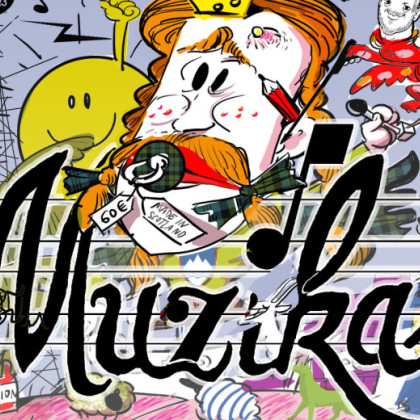NOW
Expert
Co-Authored
How to Live in the Moment
In this Article: Article Summary, Developing Your Awareness, Incorporating Mindful Activities, Community Q&A
Living in the moment is not always easy. Sometimes our thoughts are overwhelmed by regrets about past events or anxiety about the future, which can make it hard to enjoy the present. If you are having a hard time living in the moment, there are some simple strategies that may help. There are little things that you can do throughout your day, such as creating a mindfulness cue, learning to meditate, and performing random acts of kindness. Keep reading to learn more about how to live in the moment.
Method1
Developing Your Awareness
[Image titled Live in the Moment Step 1]
1
Start small. While you might be tempted to completely overhaul your lifestyle, it is not necessary to make big changes to start living in the moment. Start by incorporating new habits one at a time. Once you feel like you have mastered a habit, add something else.
For example, instead of trying to meditate for 20 minutes per day right away, start by trying to meditate for three minutes per day. Then, increase your time as you become more comfortable with meditation.[1]
Walk to work with your phone in your pocket. Do not text or talk on the phone unless it is an emergency.
[Image titled Live in the Moment Step 2]
2
Buddha
There is only one time and place where you can be and have any control over.
The present moment.
But most of us still spend a lot of our regular days lost in memories, reliving a sunny vacation or maybe more commonly repeating an old conflict or negative situation over and over in our thoughts.
Or we get lost in scenarios about what could happen in the future. Maybe through wishful daydreams. Or maybe by building monsters in our minds as thoughts go round and and round and create scary and dangerous mountains out of molehills or just air.
Or your thoughts may become split and unfocused between several different things and tasks.
If you spend a lot of your everyday moments and time in the future or the past or you have difficulty focusing and you feel this may have a negative effect on your life then maybe you want to learn to live more in the present moment.
Here’s what works for me to do that. Just a few simple things that I use in my normal day.
Notice sensory details about routine activities. Learning to live in the moment can also be a part of your daily routine. You can incorporate mindfulness into your daily routine by deliberately noticing the sensory details of something that you are doing. Focus on the sight, sound, smell, and feel of your daily activities.[2]
For example, the next time that you brush your teeth, notice the smell of your toothpaste, the sound of the brush against your teeth, and the way that it feels.
[Image titled Live in the Moment Step 3]
3
Redirect your mind when it wanders. It is normal for your mind to wander, but in order to live in the moment, you need to keep your mind focused on the present. When you notice that your mind is wandering, use gentle redirection to focus on the present again. Acknowledge that your mind is wandering without judging yourself for doing so.[3]
To get started with meditation, find a quiet spot and get comfortable. You can either sit in a chair or on a cushion on the floor with your legs crossed. Close your eyes and concentrate on your breathing. As you focus on your breathing, try not to get distracted by your thoughts. Just let them happen and pass by.
Without opening your eyes, observe the world around you. Pay attention to how you feel as well. What do you hear? What do you smell? How do you feel? Physically? Emotionally?
Set a gentle timer on your phone so that you know when to stop. You may want to start by meditating for 5 minutes and build up from there.
Make sure the people you live with know that you will be meditating and ask them not to disturb you.[7]
When you wake up and start doing your first thing of the day, then slow it down a bit.
Do it and the next few things at a relaxed and calm pace. It will probably not take that much longer than if you do it quickly. And you’ll be able to stay present more easily, to focus on each thing you do and to find a simple joy or stillness in it.
Do that instead of increasing your stress right away and getting stuck in worries or though loops about what may happen today before you even have your breakfast.
And as you move through your day, try to do it slowly when you can.
3. Tell yourself: now I am…
As I do something I simply tell myself this in my mind: Now I am X.
For example, if I am brushing my teeth, then I tell myself: Now I am brushing my teeth.
This habit is maybe most important when doing things where it is easy to drift away to the future or past. It could be when you brush your hair or teeth or when you are taking a walk to the supermarket.
I don’t tell myself this line all the time, but I pepper it in a couple of times throughout my day.
4. Minimize what you let into your head early in the day.
If I check the email, Facebook and other websites online early in the day then I have found that I will have more thoughts bouncing around in my head. And so it becomes a lot harder to concentrate on anything, to stay present and to not be dragged away into some negative thought loop.
So the kind option towards myself has become to not check anything early in the day. And to check things as few times as I can.
If I minimize such things then my day becomes lighter and simpler and I not only stay present more easily but I also tend to get more things of importance done.
8 Ways to Return to the Present Moment
by HENRIK EDBERG on FEBRUARY 15, 2008
[8 Ways to Return to the Present Moment]
Image by visualpanic.
As humans we tend to spend a lot of time in the past or the future. We spend much time thinking about what was and what could have been. And we spend much time projecting into the future and wondering about what may happen.
This way of thinking is indeed a great way to make much of your life a lot more miserable and limited than necessary. The key to solving this problem is of course to live as much as you can in the only moment that you ever really live in and control. This moment right now. The moment that is all there ever was and – probably :) – will be.
There are more advantages to being in the moment besides being able to decrease mindmade suffering. Some of those advantages are:
Clarity. When you are in the moment you have a much better focus and things flow naturally out of you. This is very useful in conversations, at work, while writing or while on the tennis court.
Calmness. You feel centred, relaxed and whatever you do you do more easily. Since you are not projecting into a possible future or reflecting on previous experiences there is very little fear holding you back or worry stopping you.
Positivity. Since there is little fear, there are few negative emotions when you are in the present. Instead you move around on the positive part of the emotional scale.
Now, that sounds nice and useful.
But how can you step away from the thought loops that whirl back and forth through your memories and fantasies?
How do you actually return to the present moment?
Here are 8 ways. But before we get to them I’d just like to add that this is a skill.
You will slip back into involuntarily thinking about the future/past. But the more time and effort you spend connecting with the moment the easier it gets reconnecting with it. And staying there longer.
1. Focus on what’s right in front of you.
Or around you. Or on you. Use your senses.
Just look at what’s right in front of you right now (besides your laptop/phone and my blog). Listen to the sounds around you. Feel the fabric of your clothes and focus on how they feel.
For the last three days the dark winter seems to have left us here in Sweden. It’s been clear skies and sunshine all the time. So I have been using the unexpected light and warmth of the sunshine on my skin to reconnect with the moment.
2. Focus on your breathing.
Method2
Incorporating Mindful Activities
[Image titled Live in the Moment Step 7]
1
Be grateful for breaks. Having to wait for something can be irritating, but if you want to live in the moment, you will need to learn how to think about waiting as a good thing. Instead of becoming impatient when you have to wait for something, practice being grateful for the extra time to notice your surroundings. Treat the extra time as a break and appreciate the time.[8]
For example, if you have to wait in a long line to purchase your morning coffee, take that time to observe your surroundings. As you do so, think about what you are grateful for in that moment.
[Image titled Live in the Moment Step 8]
2
Focus on one part of your body. You can learn to be more present by taking time to home in on how you are feeling in one part of your body, such as the soles of your feet. As you repeat the practice of shifting your consciousness to one part of your body, you will learn to be more aware of the present moment.
If you find that you are having a hard time being present, close your eyes and focus all of your attention on the soles of your feet. As you do so, think about how the soles of your feet feel against your shoes or on the ground. Notice the curve of your arch, the back of your heel, and the bottoms of your toes.[9]
[Image titled Live in the Moment Step 9]
3
Smile and laugh more often. Living in the moment can be a challenge if you are in a bad mood or just feeling a little down, but smiling and laughing can make you feel better even you force yourself to smile and laugh.[10] If you find that you are not focused on the present because you feel unhappy, force yourself to smile and laugh a bit. Even if you put on a fake smile and laugh in a goofy way, you should start to feel better right away.
[Image titled Live in the Moment Step 10]
4
Practice gratitude. Being grateful helps to bring you to the present moment because you are thinking about what has made you grateful and how that has affected you in the here and now. Gratitude can also help you to remember good things in life or gifts.[11]Practice being thankful for who you are, how you are feeling in the moment, and for loved ones such as friends, family, or pets.
Throughout the day, take a moment to remember something you are thankful for. You can speak or even write down your gratitude to reinforce it. For example, you might say or write, “I am so thankful the sun is out today; it’s beautiful!” or “I am so thankful for my caring family; they make me feel so special.”
[Image titled Live in the Moment Step 11]
5. No, no, no + reconnect with the here and now.
The four tips above make it easier to stay in the present moment and to use it and enjoy it fully. But each day I still drift into the past or the future. Or my thoughts become split between different things.
If you have read any of my stuff on self-esteem then you know that I often use a stop-word or phrase to quickly disrupt and stop the inner critic or a self-esteem damaging train of thought. I do the same thing here.
As quickly as I notice that my thoughts have drifted away I say to myself: No, no, no.
Don't get upset at yourself if your mind wanders. It is normal for your mind to wander sometimes. Just accept that you took a little mental vacation and return your focus to the present.
[Image titled Live in the Moment Step 4]
4
Choose a mindfulness cue. It may be difficult to remember to be mindful when you are very busy. A mindfulness cue, such as a string tied around your wrist, a pen mark on your hand, or a coin in your shoe can help you to remember to be mindful. When you notice the cue, make sure that you take a moment to stop and notice your surroundings.
1. Single-task not only your work.
I and many others have often written and talked about the importance of single-tasking your work to get it done more effectively.
I have found that it becomes easier for me to stay present for more time throughout my day if I single-task everything as best I can.
That means to not use tabs when I browse the internet but to just be fully engaged with one thing online at a time. It means to not use my smartphone or my computer as I also try to watch the TV. Or to use any of those internet-devices during a conversation.
Get a good start to your day and set the tone for it by doing one thing at a time as soon as you wake up.
If you have to multitask, then try to set off some specific time for it during your day. Maybe an hour or so in the afternoon.
2. Do it slowly.
You can also use something more external like making a cup of tea, looking in the mirror, or removing your shoes after work as your cue.[4]
After a while, you may begin to ignore the cue because you are used to it. If this happens, change your cue to something else.
[Image titled Live in the Moment Step 5]
5
Change a routine. You may not be living in the moment because you are too set in your routine. One way that you can become more aware is to change up your routine. You can do something as simple as changing the way that you drive to work, altering the way you introduce yourself, or tweaking a favorite story. Making a small change to one of your routines may be enough to make you more aware of your surroundings.[5]
Try taking a different route for your evening walk or add a new ritual to your bedtime routine.
[Image titled Live in the Moment Step 6]
6
Learn how to meditate. Meditation is a great way to train your brain to live in the moment. As you meditate, you practice noticing your thoughts and simply watching as they go by. Learning to meditate takes time, practice, and guidance, so your best bet is to find a meditation class in your area. If no classes are available in your area, you can also buy CDs that will help you learn how to meditate.[6]
Then I quickly follow that up with focusing on just my breathing or just on what is happening around me right now with all my senses for a minute or two to draw myself back into this present moment.
5
Do kind things for others. Performing random acts of kindness can help you to live in the moment by refocusing your attention on what’s happening in front of you. Look for small things that you can do to demonstrate kindness to others. The kind acts that you perform will help you to slow down and notice your surroundings.[12]
For example, you could offer a compliment to a stranger such as, “I love your dress! It is so beautiful.” Look for ways to show kindness in whatever situation you are in. Even something as simple as smiling and nodding at people throughout the day might help to brighten someone’s day and keep you focused on the present.
You're helping people by reading wikiHow
wikiHow's mission is to help people learn, and we really hope this article helped you. Now you can help others, just by visiting wikiHow.
The wildfires burning in California are the worst in the state’s history. Our partners at Direct Relief are on the scene providing critical aid to those affected. If you click below to let us know you read this article, wikiHow will donate to Direct Relief on your behalf to support the relief effort for California.
If you would like to find other ways to help, you can read our wikiHow article on Helping Victims of the CA Fires.
Thanks for helping us achieve our mission of helping everyone learn how to do anything.









Dodaj komentar
Komentiraj